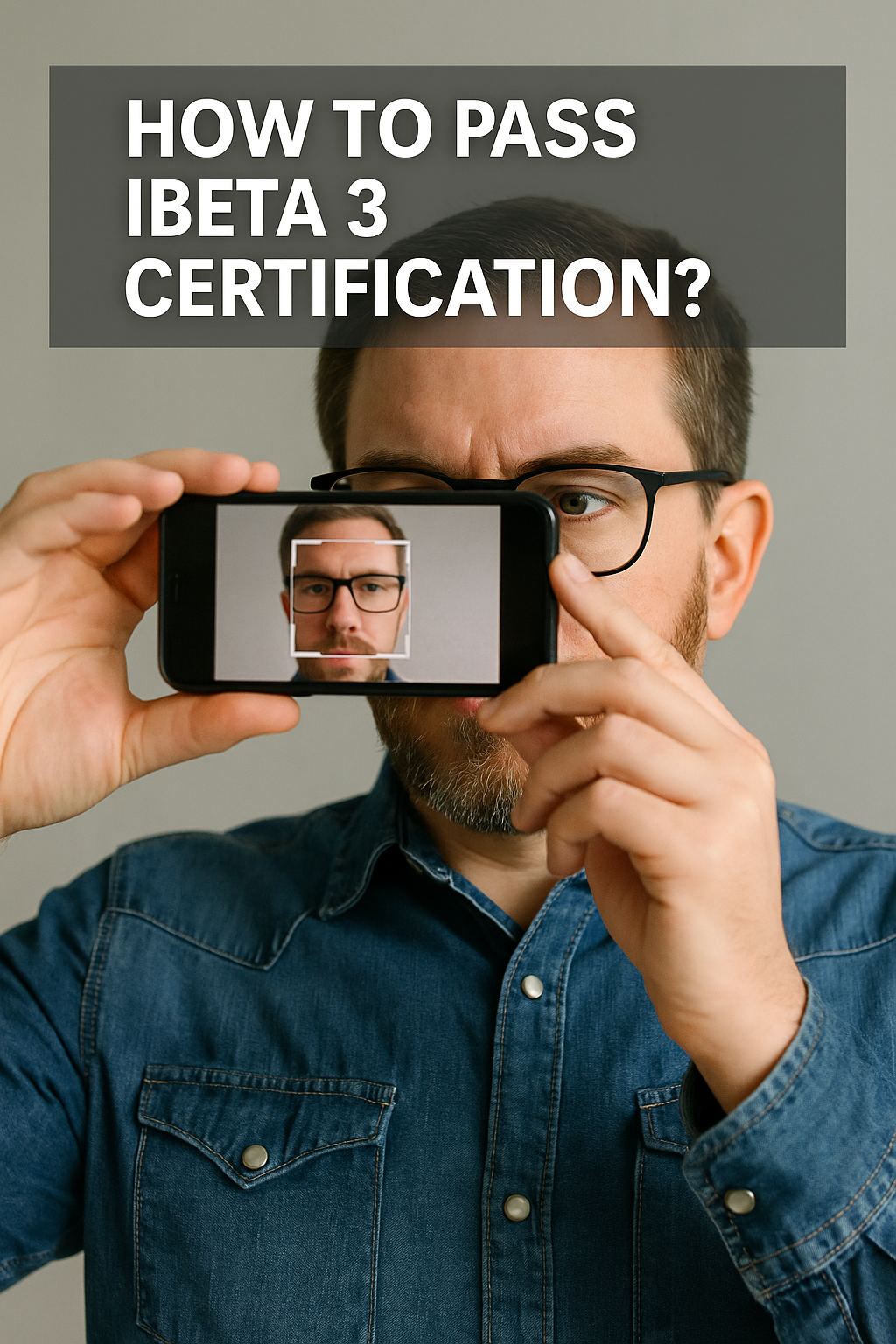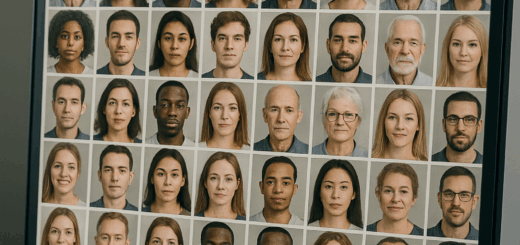How to Pass iBeta Level 3 Certification?
The iBeta Level 3 certification is the most advanced and demanding stage of biometric Presentation Attack Detection (PAD) testing under the ISO/IEC 30107-3 standard. Unlike Levels 1 and 2, which focus on low-cost and medium-effort spoofing, Level 3 challenges biometric systems with state-of-the-art, resource-intensive attacks such as hyper-realistic masks, multispectral forgeries, and AI-generated deepfakes.
Passing this certification proves that a biometric solution is among the most secure in the world, trusted for deployment in defense, government, and high-security industries.

1. Understand Level 3 Certification Requirements
Before preparing, biometric vendors must know the Level 3 testing framework:
- Attack Complexity: State-of-the-art spoofs (3D composites, deepfakes, synthetic biometrics).
- Materials Cost: Up to around USD 1000 for spoof creation.
- Timeframe: Weeks or even months of preparation allowed for attacks.
- Subjects: A broader set of volunteers (8–10 or more).
- Pass/Fail Criteria:
- Zero tolerance for spoof acceptance.
- Strict FRR requirements to ensure genuine users are not unfairly rejected.
📌 In short: Level 3 assumes the attacker is well-funded, highly skilled, and determined — and the system must still hold strong.
2. Build Next-Generation Liveness Detection
To pass Level 3, systems must go beyond traditional PAD defenses. Recommended techniques include:
- Multispectral Imaging
- Analyze sub-surface skin layers using infrared or near-infrared light.
- Analyze sub-surface skin layers using infrared or near-infrared light.
- Blood Flow and Pulse Detection
- Confirm the presence of a living subject with real-time physiological signals.
- Confirm the presence of a living subject with real-time physiological signals.
- AI-Powered Deepfake Resistance
- Use machine learning models trained to detect manipulated or synthetic imagery.
- Use machine learning models trained to detect manipulated or synthetic imagery.
- 3D and Motion Analysis
- Detect subtle head movements, facial micro-expressions, and natural blink dynamics.
- Detect subtle head movements, facial micro-expressions, and natural blink dynamics.
- Cross-Modality Verification
- Combine two biometrics (e.g., face + voice, or fingerprint + iris) for redundancy.
💡 Pro Tip: Multi-layered liveness detection combining optical, physiological, and behavioral cues is essential at this stage.
3. Run Internal Level 3 Simulations
Before submitting for certification, vendors must conduct rigorous in-house testing:
- Invest in advanced spoof artifacts: high-quality 3D masks, silicone prosthetics, resin molds.
- Experiment with AI-generated attacks: synthetic faces, voices, or deepfake videos.
- Test across multiple devices: smartphones, tablets, scanners, and specialized hardware.
- Vary environments: indoor/outdoor, bright/dim lighting, temperature variations.
- Measure Key Metrics:
- FAR (False Accept Rate)
- FRR (False Reject Rate)
- SFAR (Spoof False Accept Rate)
- FAR (False Accept Rate)
Systems should demonstrate consistent resilience across conditions.
4. Balance Security with Usability
One of the biggest challenges at Level 3 is avoiding false rejections while maintaining zero spoof acceptance.
- Optimize thresholds: Don’t make the system overly strict, which could frustrate genuine users.
- Test for demographic fairness: Ensure consistent results across skin tones, ages, and facial structures.
- Account for hardware limitations: Ensure usability on both high-end and mid-range devices.
5. Work Closely with iBeta
Engaging with iBeta early is crucial:
- Clarify testing scope: Some industries (defense, healthcare, fintech) may have extra requirements.
- Understand reporting: Results will include FAR, FRR, SFAR, and compliance levels.
- Align timelines: Level 3 testing may take longer due to artifact preparation.
6. Avoid Common Pitfalls
Many systems fail Level 3 because of:
- Over-reliance on a single defense (e.g., only depth sensing).
- Weakness against deepfakes or synthetic data.
- Inconsistent detection across hardware platforms.
- High FRR, making the system impractical for real-world use.
- Failure to test internally with advanced, high-quality spoofs.
7. Best Practices for Success
✔ Implement multi-layered liveness detection (optical + physiological + behavioral).
✔ Run internal deepfake and 3D spoof tests before submission.
✔ Keep FRR low while maintaining 0% spoof acceptance.
✔ Test on diverse demographics and devices.
✔ Continuously update liveness algorithms as spoofing evolves.
✔ Document your system’s defenses clearly for iBeta evaluators.
8. Benefits of Passing Level 3 Certification
- Global leadership in biometric security.
- Trust from governments, defense, and critical industries.
- Differentiation from competitors stuck at Level 1 or Level 2.
- Future-proof assurance against emerging threats like deepfakes.
- Regulatory and client confidence, opening doors to high-value contracts.
Quick Checklist: How to Pass iBeta Level 3
- ✅ Understand Level 3 requirements (complex spoofs, weeks of prep, ≤ USD 1000 budget).
- ✅ Build next-gen liveness detection (multispectral, AI deepfake resistance, pulse detection).
- ✅ Run internal simulations with advanced spoof artifacts.
- ✅ Ensure zero spoof acceptance while keeping FRR minimal.
- ✅ Engage with iBeta early for clarity and planning.
- ✅ Document and optimize results for regulatory trust.
Related Topics
- How to pass iBeta Level 3 certification
- iBeta PAD Level 3 test preparation
- ISO/IEC 30107-3 Level 3 certification
- deepfake spoof detection testing
- biometric liveness detection Level 3
- advanced biometric certification steps
- passing iBeta Level 3 testing
Conclusion
Passing iBeta Level 3 certification is the ultimate achievement in biometric PAD testing. It proves that a system can resist sophisticated, resource-intensive attacks such as deepfakes, hyper-realistic masks, and multispectral spoofs — while still providing a seamless experience for genuine users.
For vendors, Level 3 certification is more than compliance — it’s a declaration of world-class security, trustworthiness, and resilience. Those who achieve it gain a powerful competitive edge in the most sensitive and high-security industries worldwide.


